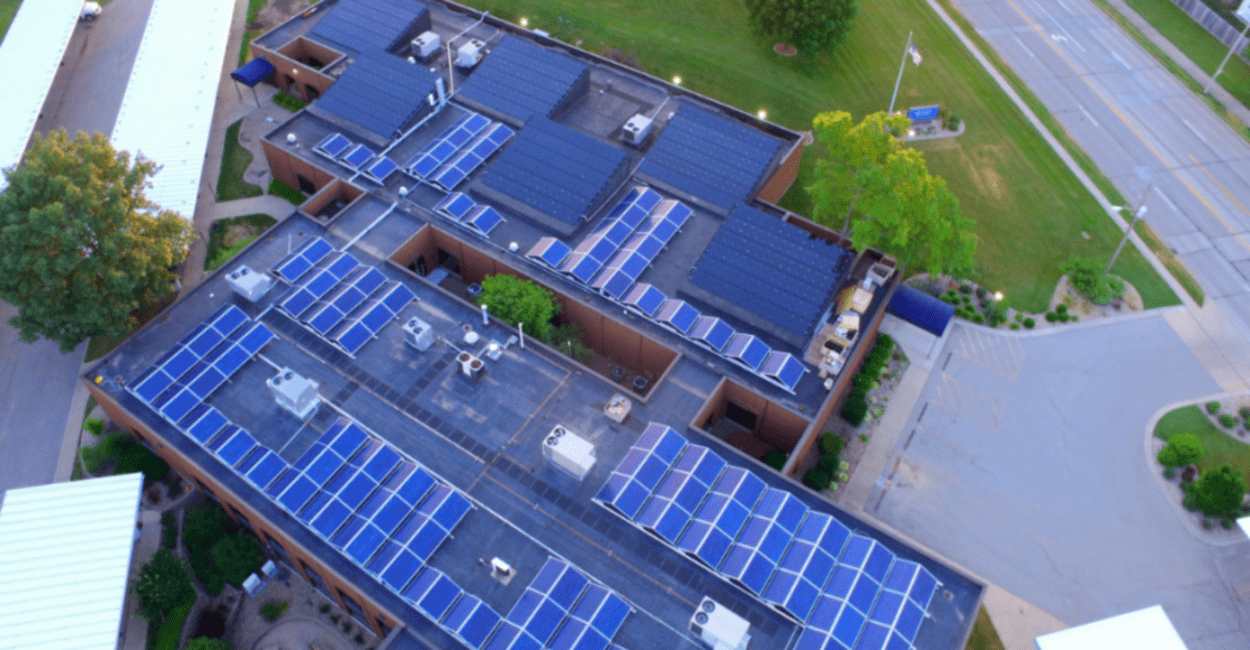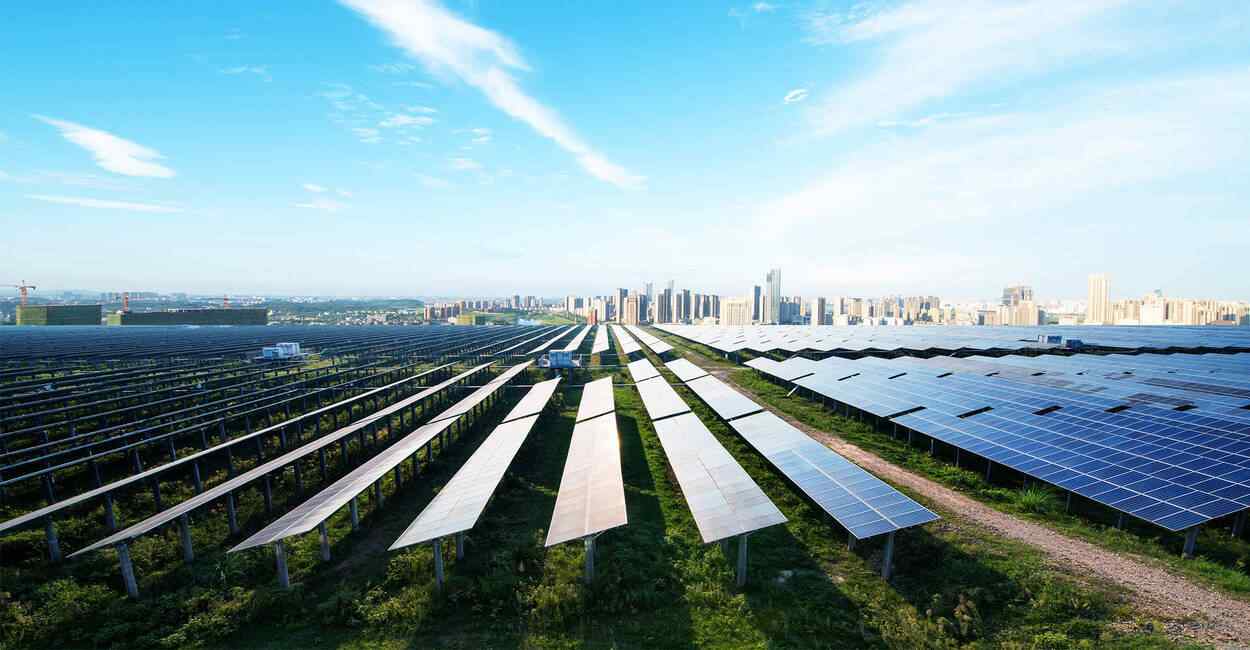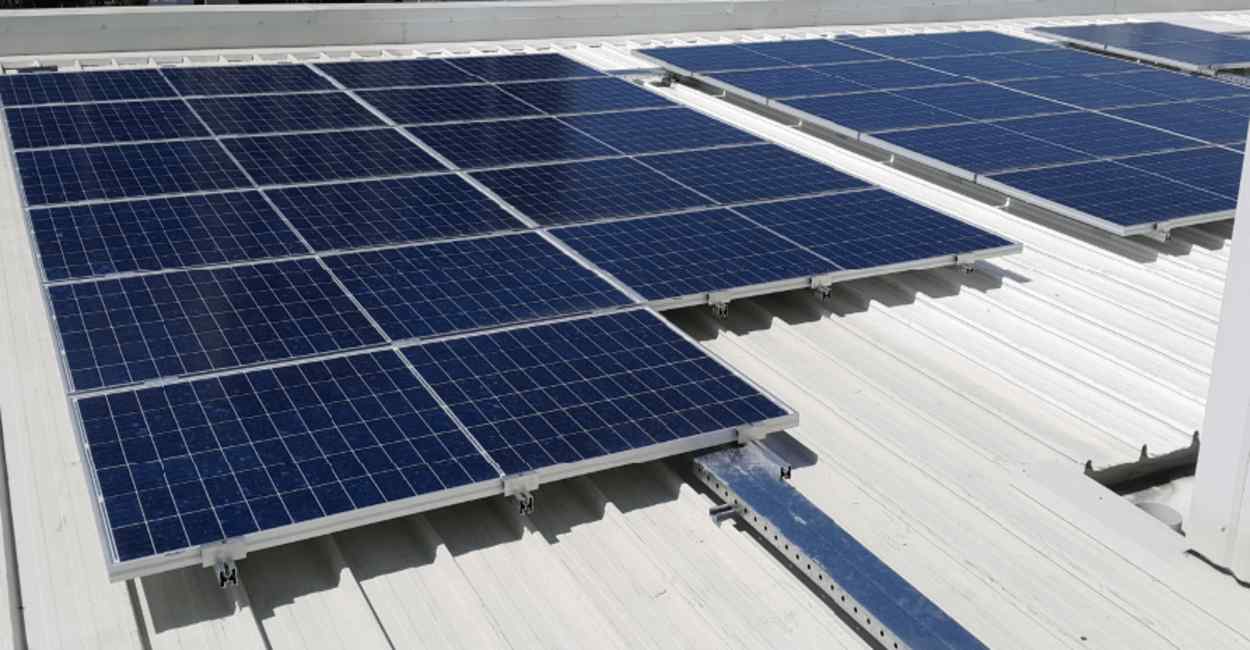The Future Of Solar Installations In Commercial And Industrial Settings

The future of solar installations in commercial and industrial settings is promising, with growth projections indicating a continued expansion of the market. This growth is driven by several factors, including:
Government incentives: Governments around the world are providing financial incentives to encourage the adoption of renewable energy, including solar power. These incentives can include tax credits, rebates, and grants, making it more cost-effective for commercial and industrial companies to install solar systems.
Declining costs: The cost of solar panels and components is declining, making it more affordable for commercial and industrial entities to invest in solar power.
Energy independence: By generating their own power, commercial and industrial entities can reduce their dependence on the grid, lower their energy costs, and reduce their carbon footprint.
Improved technology: Advances in solar technology, such as improved panels and battery storage systems, are making it easier and more efficient for commercial and industrial entities to install and use solar power.
Increased awareness: As awareness of the benefits of renewable energy grows, commercial and industrial entities are becoming more interested in investing in solar power, both for environmental and financial reasons.
Solar Energy Installations For Businesses
Solar energy installations for businesses are becoming increasingly popular as a way to reduce energy costs and minimize their carbon footprint. The benefits of solar power for businesses include:
Cost savings: Solar energy systems can significantly reduce a business's energy costs, as they generate electricity from the sun rather than from the grid.
Increased energy independence: By generating their own power, businesses can reduce their dependence on the grid and become more self-sufficient.
Improved sustainability: Solar power is a clean and renewable source of energy, making it an environmentally responsible choice for businesses.
Enhanced reputation: Adopting solar power can help businesses enhance their reputation and differentiate themselves from competitors, as it shows a commitment to sustainability and reducing their carbon footprint.
Government incentives: Many governments offer financial incentives, such as tax credits and rebates, to businesses that invest in renewable energy, including solar power.
The installation of solar energy systems can be complex, but the long-term benefits make it an attractive option for businesses looking to reduce their energy costs, increase their energy independence, and improve their sustainability.
Commercial Solar Power Systems
Commercial solar power systems refer to large-scale solar energy installations used by businesses, institutions, and other organizations to generate electricity for their operations. Commercial solar systems are typically designed and installed by professional solar contractors, and can range in size from a few kilowatts to several megawatts.
The benefits of commercial solar power systems include:
Cost savings: By generating their own power, businesses can reduce their dependence on the grid and lower their energy costs.
Increased energy independence: Commercial solar power systems allow businesses to generate their own electricity, reducing their dependence on the grid and making them more self-sufficient.
Improved sustainability: Solar power is a clean and renewable source of energy, making it an environmentally responsible choice for businesses.
Enhanced reputation: Adopting solar power can help businesses enhance their reputation and differentiate themselves from competitors, as it shows a commitment to sustainability and reducing their carbon footprint.
Government incentives: Many governments offer financial incentives, such as tax credits and rebates, to businesses that invest in renewable energy, including solar power.
Commercial solar power systems can be customized to meet the specific energy needs of businesses and can be integrated with energy storage systems, such as batteries, to provide reliable and stable power even when the sun is not shining. With the declining costs of solar technology and the increasing demand for clean and renewable energy, commercial solar power systems are a cost-effective and sustainable choice for businesses.
Industrial Solar Panel Technology
Industrial solar panel technology refers to large-scale solar energy installations used by industrial facilities to generate electricity for their operations. Industrial solar panels are typically made of photovoltaic (PV) cells that convert sunlight into electricity and are designed to withstand harsh environmental conditions and provide a long lifespan.
The benefits of industrial solar panel technology include:
Cost savings: By generating their own electricity, industrial facilities can reduce their dependence on the grid and lower their energy costs.
Increased energy independence: Industrial solar panels allow industrial facilities to generate their own electricity, reducing their dependence on the grid and making them more self-sufficient.
Improved sustainability: Solar power is a clean and renewable source of energy, making it an environmentally responsible choice for industrial facilities.
Enhanced reputation: Adopting solar power can help industrial facilities enhance their reputation and differentiate themselves from competitors, as it shows a commitment to sustainability and reducing their carbon footprint.
Government incentives: Many governments offer financial incentives, such as tax credits and rebates, to industrial facilities that invest in renewable energy, including solar power.
Industrial solar panel technology can be customized to meet the specific energy needs of industrial facilities, and can be integrated with energy storage systems, such as batteries, to provide reliable and stable power even when the sun is not shining. With the declining costs of solar technology and the increasing demand for clean and renewable energy, industrial solar panel technology is a cost-effective and sustainable choice for industrial facilities.

Green Energy Solutions For Industries
Green energy solutions for industries refer to the adoption of clean, renewable, and sustainable sources of energy by industrial facilities. These solutions are aimed at reducing the carbon footprint of industrial operations and improving their overall sustainability.
Examples of green energy solutions for industries include:
Solar Energy: Installing solar panels on industrial buildings or large open spaces to generate electricity from the sun.
Wind Energy: Using wind turbines to generate electricity from the movement of air currents.
Geothermal Energy: Utilizing heat from the earth to generate electricity, either through direct-use systems or geothermal power plants.
Biomass Energy: Using organic materials, such as wood waste or agricultural residue, to generate heat and electricity.
Hydro Energy: Generating electricity from the movement of water in rivers, lakes, and dams.
These green energy solutions provide numerous benefits to industrial facilities, including cost savings, energy independence, enhanced sustainability, improved reputation, and potential government incentives. Adopting green energy solutions is also a crucial step in reducing the global carbon footprint and mitigating the impacts of climate change. With the continued advancements in green energy technology, it is becoming increasingly cost-effective and practical for industries to switch to clean, renewable sources of energy.
Future Of Industrial Solar Energy Production
The future of industrial solar energy production is bright, as the demand for renewable and sustainable sources of energy continues to grow. The growth of the solar industry is driven by declining costs of solar panels, improvements in solar energy storage, and increasing incentives and regulations aimed at promoting the adoption of renewable energy.
One of the major trends in industrial solar energy production is the increase in large-scale solar projects, such as utility-scale solar farms and rooftop solar installations. These projects allow industries to generate a significant portion of their energy needs from the sun and reduce their reliance on traditional energy sources.
In addition, the use of advanced technology and automation is also increasing in the industrial solar energy sector. This includes the use of artificial intelligence and machine learning to optimize solar energy production and the integration of solar energy with other smart technologies, such as the Internet of Things (IoT).
Furthermore, the growth of the electric vehicle (EV) industry is also expected to drive the demand for industrial solar energy production, as EVs require significant amounts of electricity to charge.
Overall, the future of industrial solar energy production is expected to be characterized by continued growth, technological advancements, and increasing integration with other sustainable energy sources. As the world continues to transition to a low-carbon economy, industrial solar energy production will play a critical role in meeting the growing demand for clean, renewable, and sustainable sources of energy.

Modern Solar Installation Techniques For Industries
Modern solar installation techniques for industries are designed to maximize the efficiency and effectiveness of solar energy systems. These techniques include:
Rooftop Solar Installations: This technique involves installing solar panels on the roof of industrial buildings to generate electricity from the sun. Rooftop solar installations are ideal for facilities with limited ground space or those located in urban areas.
Ground-Mounted Solar Installations: This technique involves installing solar panels on the ground, often in large solar farms. Ground-mounted solar installations are ideal for industrial facilities with large amounts of open space.
Floating Solar Installations: This technique involves installing solar panels on floating platforms on bodies of water, such as lakes or ponds. Floating solar installations are ideal for industrial facilities located near bodies of water and can provide shading and water conservation benefits.
Bifacial Solar Panels: These are solar panels that can capture sunlight from both the front and back sides. Bifacial solar panels are becoming increasingly popular in industrial solar installations, as they offer improved energy generation compared to traditional solar panels.
Battery Storage Systems: These systems store excess energy generated by solar panels for later use, improving the reliability and efficiency of industrial solar energy systems.
Microinverters: Microinverters are small, decentralized inverters that are installed on each individual solar panel, improving the efficiency and performance of industrial solar energy systems.
These modern solar installation techniques provide a range of benefits to industrial facilities, including cost savings, improved energy efficiency, enhanced reliability, and a reduced carbon footprint. As the solar industry continues to advance, new techniques and technologies are expected to emerge, further improving the effectiveness and efficiency of industrial solar energy systems.
In conclusion
The future of solar installations in commercial and industrial settings is bright, with the market poised for continued growth and expansion. As technology improves and costs decline, more and more companies are expected to adopt solar power as a cost-effective, sustainable, and environmentally responsible source of energy.

